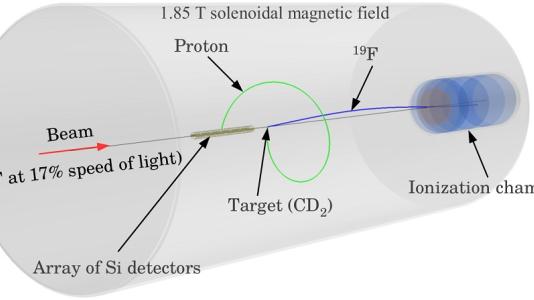
Scientific achievement
First exploration of rotational states in 19F through neutron transfer reactions on a short-lived 18F isomeric beam (about 160 ns half-life).
Significance and impact
Our work sets the basis for using transfer reactions on high-spin isomeric beams in order to probe otherwise inaccessible aspects of nuclear structure.
Research details
- The large spectroscopic strength observed for the 13/2+ state in 19F confirms the wave function purity expected in a maximally aligned terminating state
- The agreement between shell-model calculations and our experimental results reinforces the idea of a single-particle/collective duality in the descriptions of the structure of atomic nuclei
- ATLAS resources used: in-flight facility, HELIOS
https://doi.org/10.1103/PhysRevLett.120.122503
This research was funded by the U.S. Department of Energy Office of Science’s Office of Nuclear Physics.
Argonne National Laboratory seeks solutions to pressing national problems in science and technology. The nation’s first national laboratory, Argonne conducts leading-edge basic and applied scientific research in virtually every scientific discipline. Argonne researchers work closely with researchers from hundreds of companies, universities, and federal, state and municipal agencies to help them solve their specific problems, advance America’s scientific leadership and prepare the nation for a better future. With employees from more than 60 nations, Argonne is managed by UChicago Argonne, LLC for the U.S. Department of Energy’s Office of Science.
The U.S. Department of Energy’s Office of Science is the single largest supporter of basic research in the physical sciences in the United States and is working to address some of the most pressing challenges of our time. For more information, visit the Office of Science website.
